Viv Forbes was part of a small team of geologists given the task of mapping the Bowen Basin over the five years from 1961 to 1966. They explored the land from Collinsville to Injune, read the history, and produced maps and reports used by later generations.
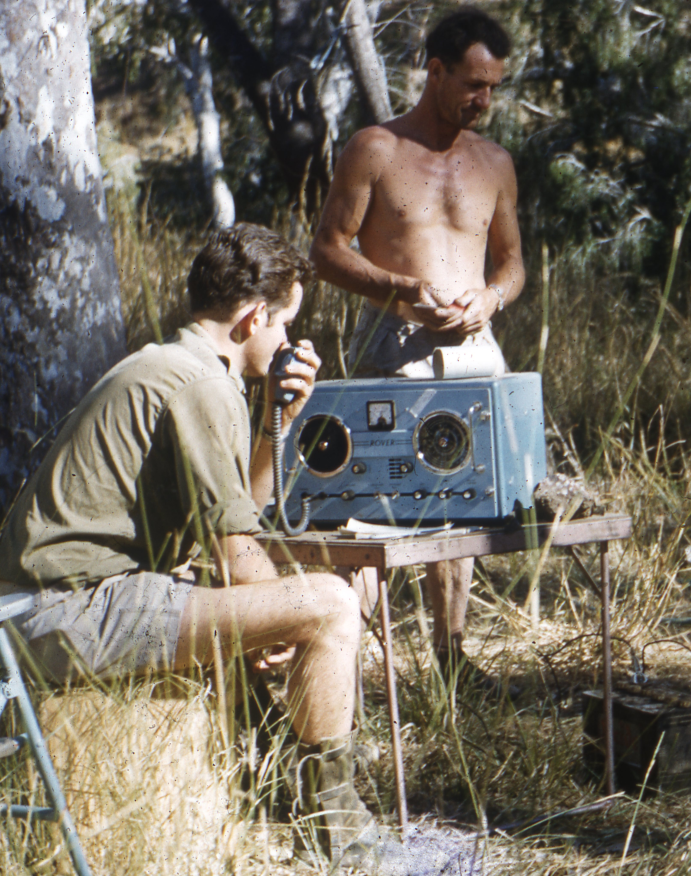
Communications in 1961: Our Version of the iPhone: Viv Forbes and Vince Oldfield (mechanic, in safety gear).
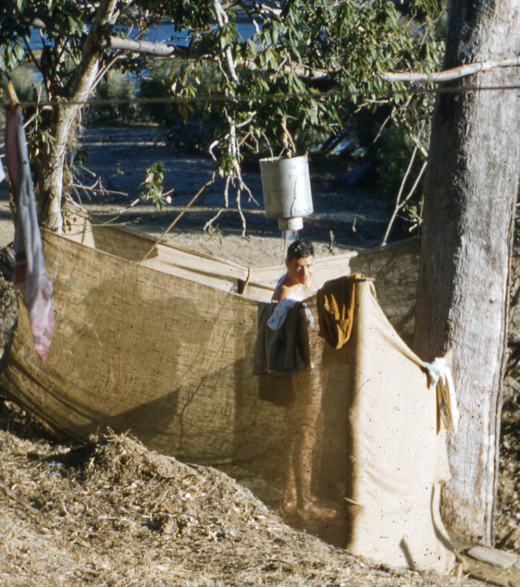
Our Air conditioned Shower Recess (solar/wind powered).
Prospectors and squatters were always a long way ahead of government surveyors, bureaucrats, and geologists – they led the modern exploration of our Great South Land.
The first prospectors chased gold, copper, and gem stones mainly because these were high-value commodities that would repay the high transport costs to distant smelters, refineries, and markets. As we mapped the Bowen Basin we found relics of their discoveries and work and marvelled at their bush engineering.
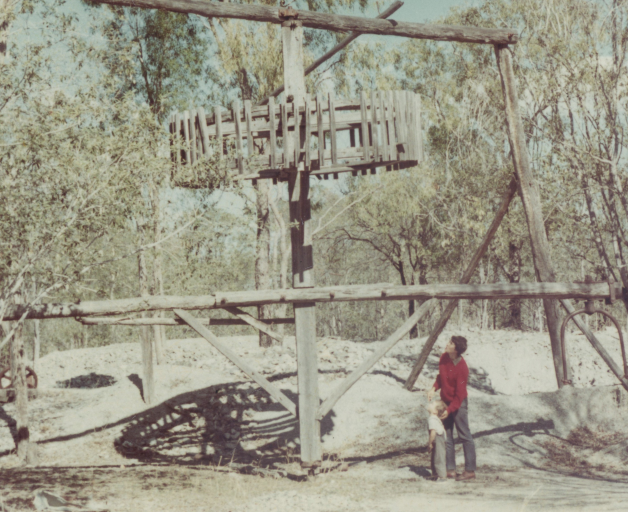
Past Technology – Clermont Gold Field: a horse-powered Capstan
We also found some amazing things like this huge crocodile skull discovered in a shaft sunk for water on a property northwest of Nebo. No crocodiles live in that area now.
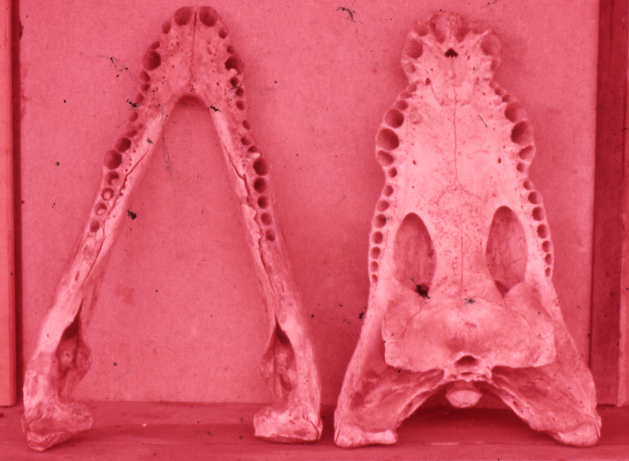
Ancient Giant Crocodile Skull, discovered by well sinkers.
Not far from this we discovered a large fossil graveyard of brachiopods’ sea shells – mute evidence of past real earth dramas and extinctions. (Every chapter of geological history ends with the disappearance of many old species and the sudden appearance of new species.)
Gold was discovered near Clermont in 1861 and The Peak Downs copper company started mining copper at Copperfield, south of Clermont in 1863. They use green transport – grass-powered horses, donkeys, and bullocks to the coast and then wind-power to the copper smelters in Britain. Only hand-picked very rich ore could repay this slow and costly green transport.
Gold was also discovered at Normanby in 1871 and a township and diggings were established and operated intermittently. (Gold was one of the few high-value mineral products that could stand the high transport costs.)
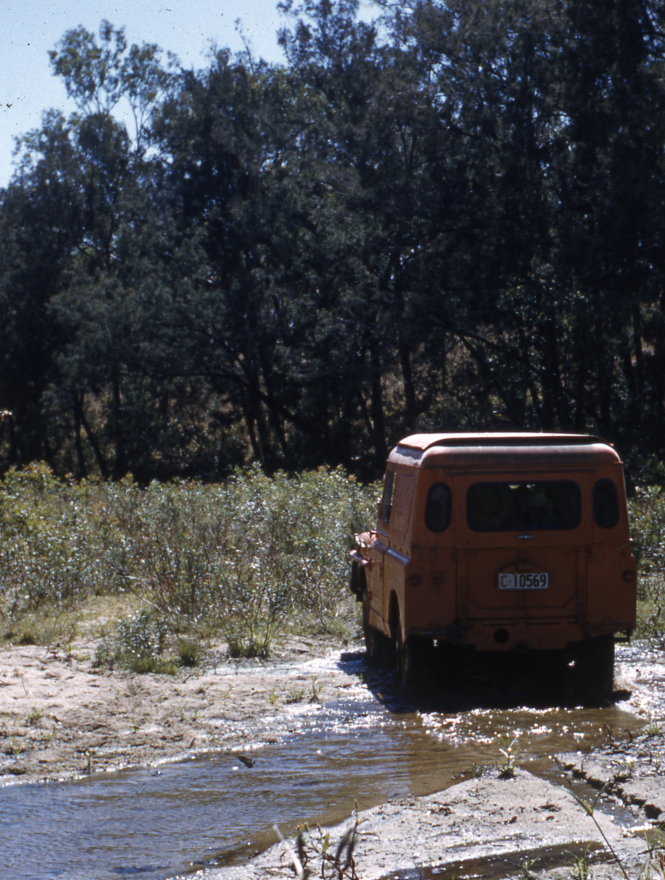
There was a gold rush to the Mount Britton discovery near Nebo, and to the Yatton gold strike further south. As they panned the creek gravels for gold, some prospectors also found gemstones like sapphire and zircon. Some tried to keep their discoveries secret, not wanting to encourage a rush of competitors.
There was a magnificent coal deposit at Blair Athol but it was hidden by a shallow covering of soil and soft rock. It was not visible on the surface but was discovered by well sinkers on the Blair Athol pastoral property in the 1860s.
With the discovery of Blair Athol coal, the Peak Downs copper miners suddenly saw a way to reduce their horrendous transport costs by using coal to smelt their ore (even though Blair Athol coal is not a coking coal). On-site smelting of copper ore took their saleable product from maybe 10 per cent copper to 90 per cent copper, thus greatly reducing the transport costs per tonne of copper to refineries in far-away Britain.
But both copper and coal mining were still intermittent operations as demand and prices fluctuated.
Blair Athol Coal also powered early steam locomotives. But it was over 120 years before the rail link to Clermont was opened in 1983 allowing export of Blair Athol coal. (Transport of Blair Athol coal was a risky business as that coal was sometimes subject to spontaneous combustion.)
The squatters came close behind the prospectors in the 1860s – the Archers to ‘Gracemere’, the Bells to ‘Sarina’, and the Athertons (cousins of the Bells) to the Atherton Tablelands. Viv’s wife Judy is a descendant of the Bell pioneers of ‘Sarina’. After 160 years in this Great South Land, maybe our families and their descendants are indigenous at last and will now be saluted by their ABC whenever they mention events in the Nebo-Sarina district? ‘Welcome to the Land of the Bells?’
The squatters brought horses, sheep, and cattle. Wool was one of the few farm products that did not need refrigeration on the long trip back to England, so merinos spread everywhere, much to the delight of alert Aboriginal hunters and marauding dingos. Soon every big mob of merinos got their own shepherd and protector.
The squatters also brought cattle but the cattle market was limited to hides and tallow for export and local consumption of meat – fresh meat for a few days after slaughter, then corned (salted) meat until the next killer was brought in. But soon drovers like Sidney Kidman (the cattle king) were drifting big mobs of cattle via the channel country to southern markets. In good seasons, the cattle fattened along the way. In big droughts, they perished around the dry waterholes.
Bullock teams were also used to haul logs from the timber getters in the scrubs and wagons of wool bales to southern ports.
Following close behind the prospectors the squatters and the bullock teams were the stage coaches. These coaches needed fresh horses regularly and every stage station became the nucleus of a small town and its pub.
Read more about ‘Cobb and Co’ and ‘The Cattle King’ here…
Coal mining began near Ipswich about 1825 and the first Queensland coal-powered train started at Ipswich in 1865.
Being creatures of governments, Australian railways have long operated on three different gauges, with goods and passengers unable to travel across artificial political borders without changing trains. And Queensland (a huge coal exporter) is confined to high-cost narrow gauge rail transport.
Ludwig Leichhardt was the first to report coal in the Blackwater area of the Bowen Basin in 1865 but it was over 100 years before there was a coal mine.
In 1934 five brothers from the Thiess family of Drayton started a small earth-moving business. Les Thiess was a pioneer of open-cut coal mining in central Queensland and was first to export coal to Japan. Negotiations with the Japanese began in 1958 and the Thiess-Peabody-Mitsui alliance was created. The first coal was exported from the Kianga open-cut mine in 1960.
Thiess also got an agreement with Toyota of Japan to distribute their products in Australia – that spelled the beginning of the end for the faithful British Landrovers that had for so long dominated travel in outback Australia.
Coal mining started at Blackwater in 1967 when Utah Development Co opened the Blackwater Mine and Thiess opened their mine at South Blackwater.
Here is a relic of those early days:
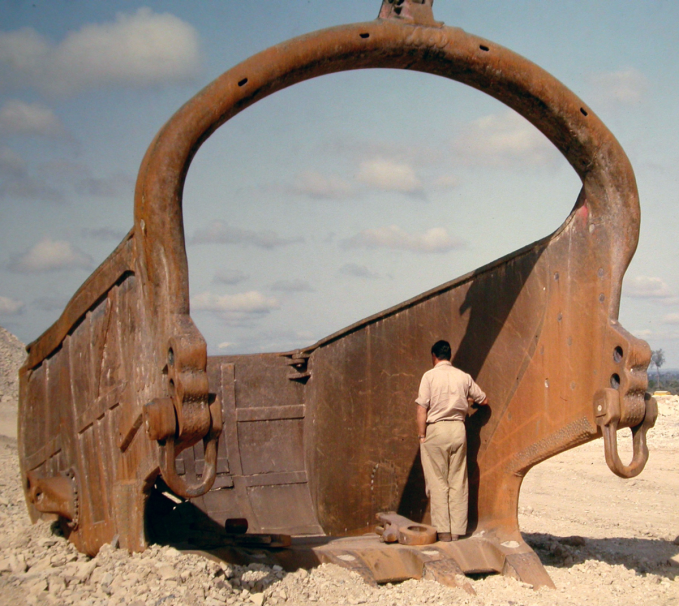
A Monument to the Pioneers
Coal was discovered at Callide by three gold prospectors in 1890 and a shaft sunk in 1903 disclosed a coal seam 53 feet (16m) thick. Open pit mining started at Callide in 1945.
It was the miners who created or funded most of today’s infrastructure – roads, railways, power, and water.
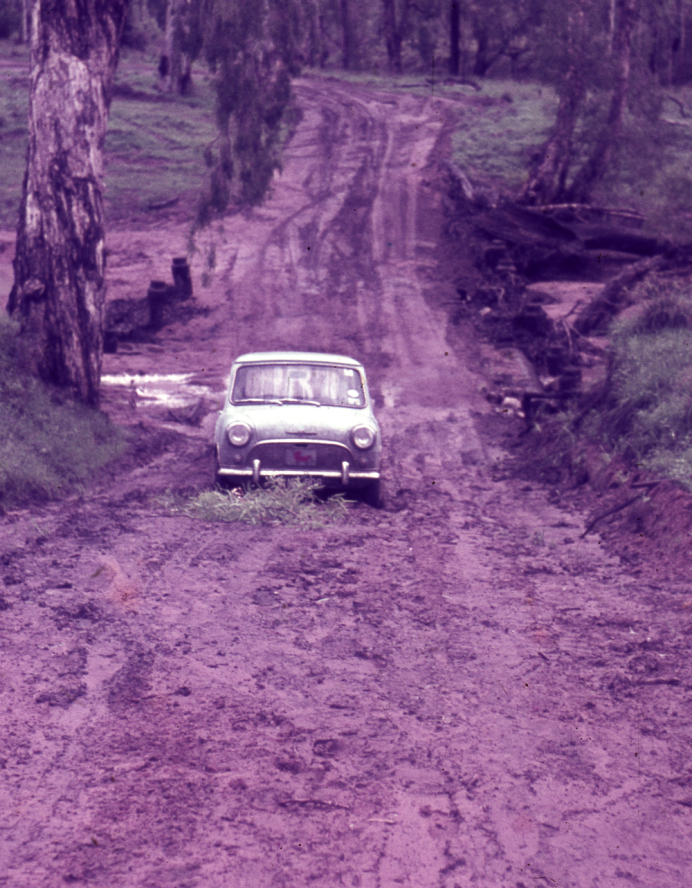
Viv’s Mini bogged on a main road in Central Qld in 1962 before the Miners brought better roads.
Got something to add? Join the discussion and comment below.
Get 10 issues for just $10
Subscribe to The Spectator Australia today for the next 10 magazine issues, plus full online access, for just $10.

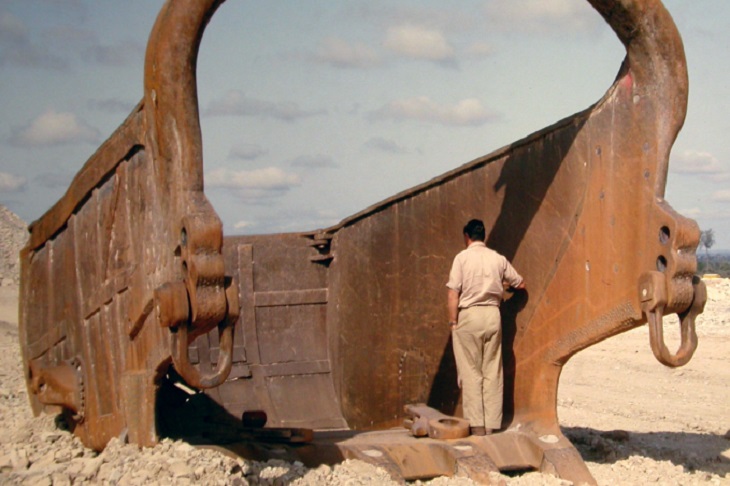
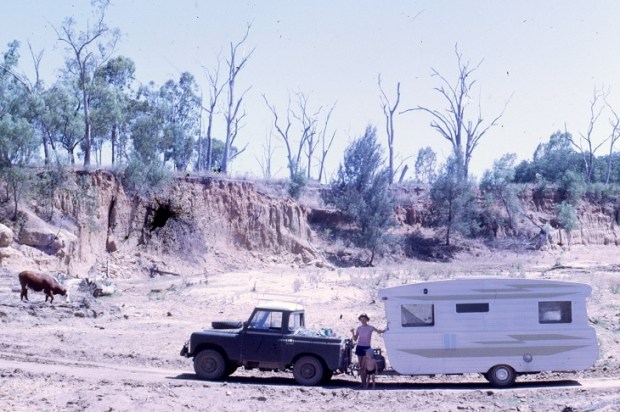
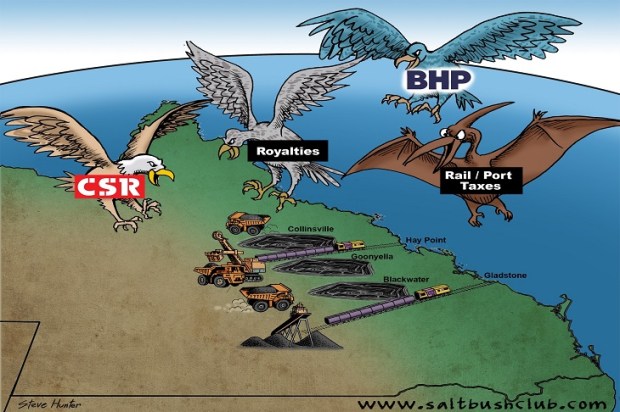
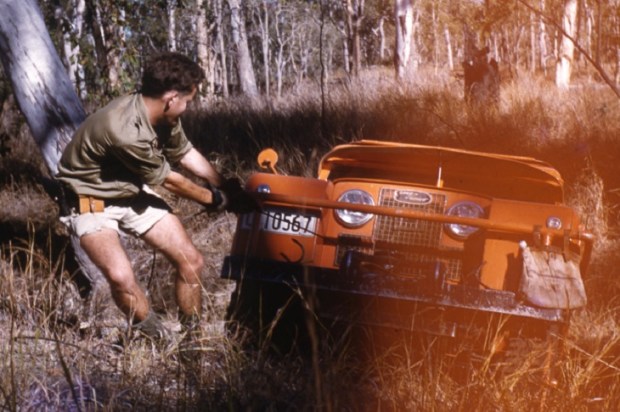
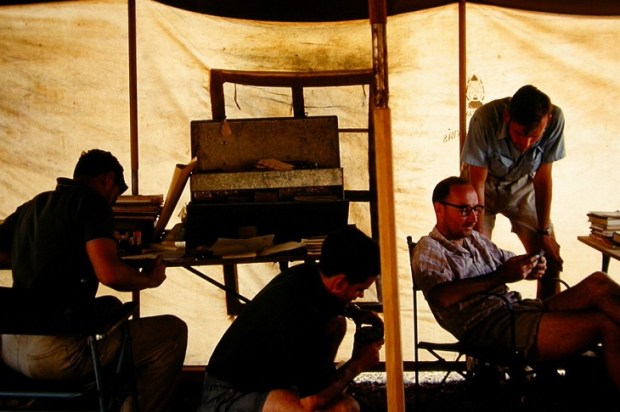








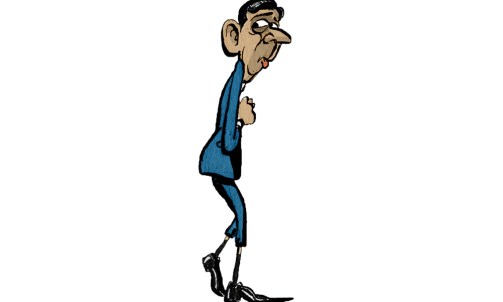

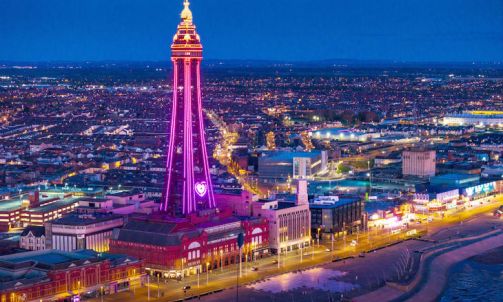


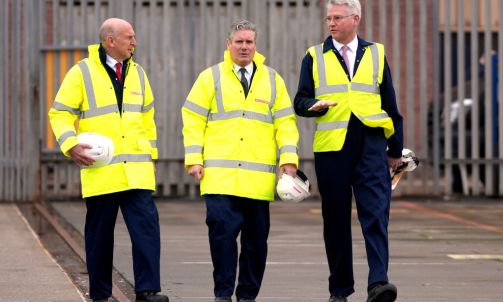






Comments
Don't miss out
Join the conversation with other Spectator Australia readers. Subscribe to leave a comment.
SUBSCRIBEAlready a subscriber? Log in